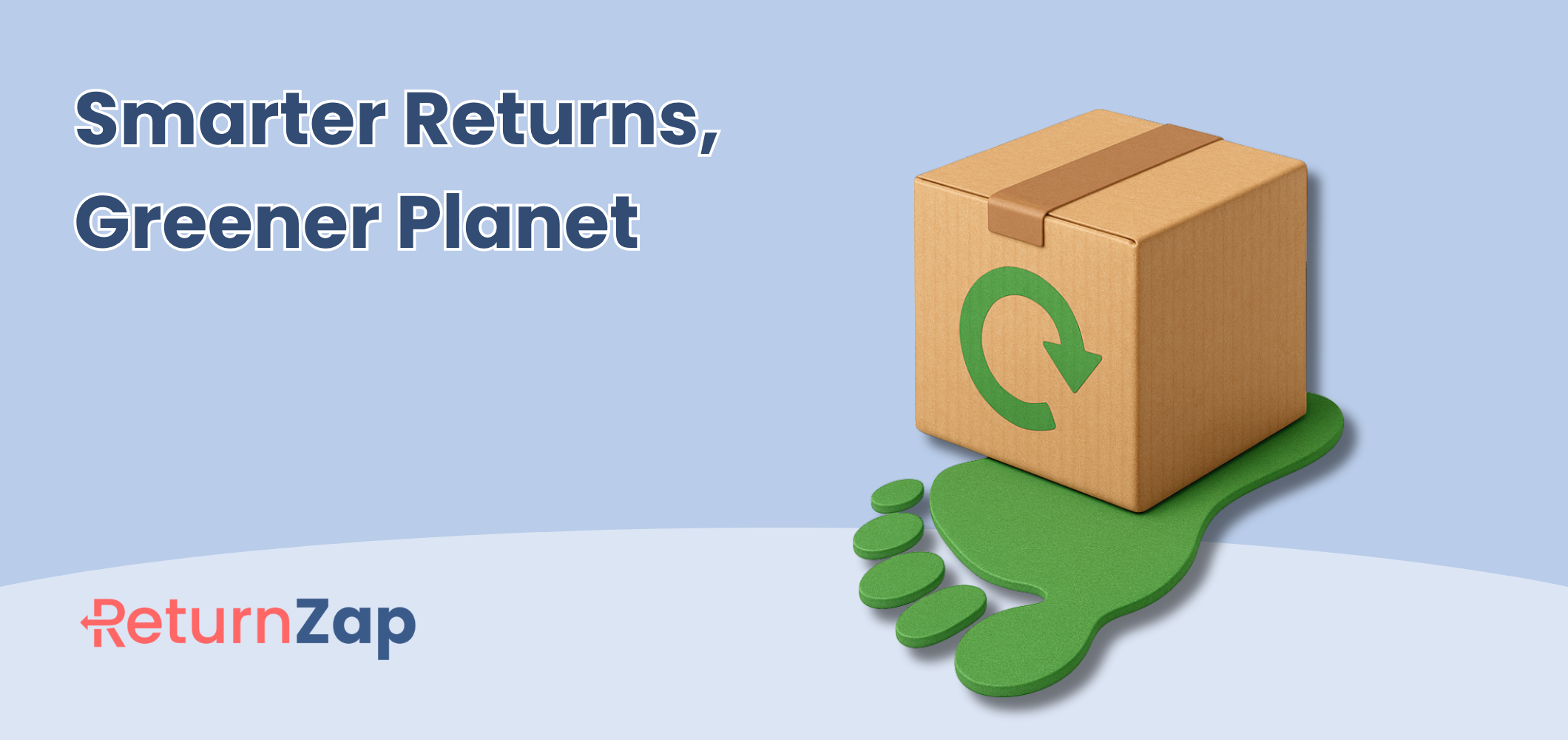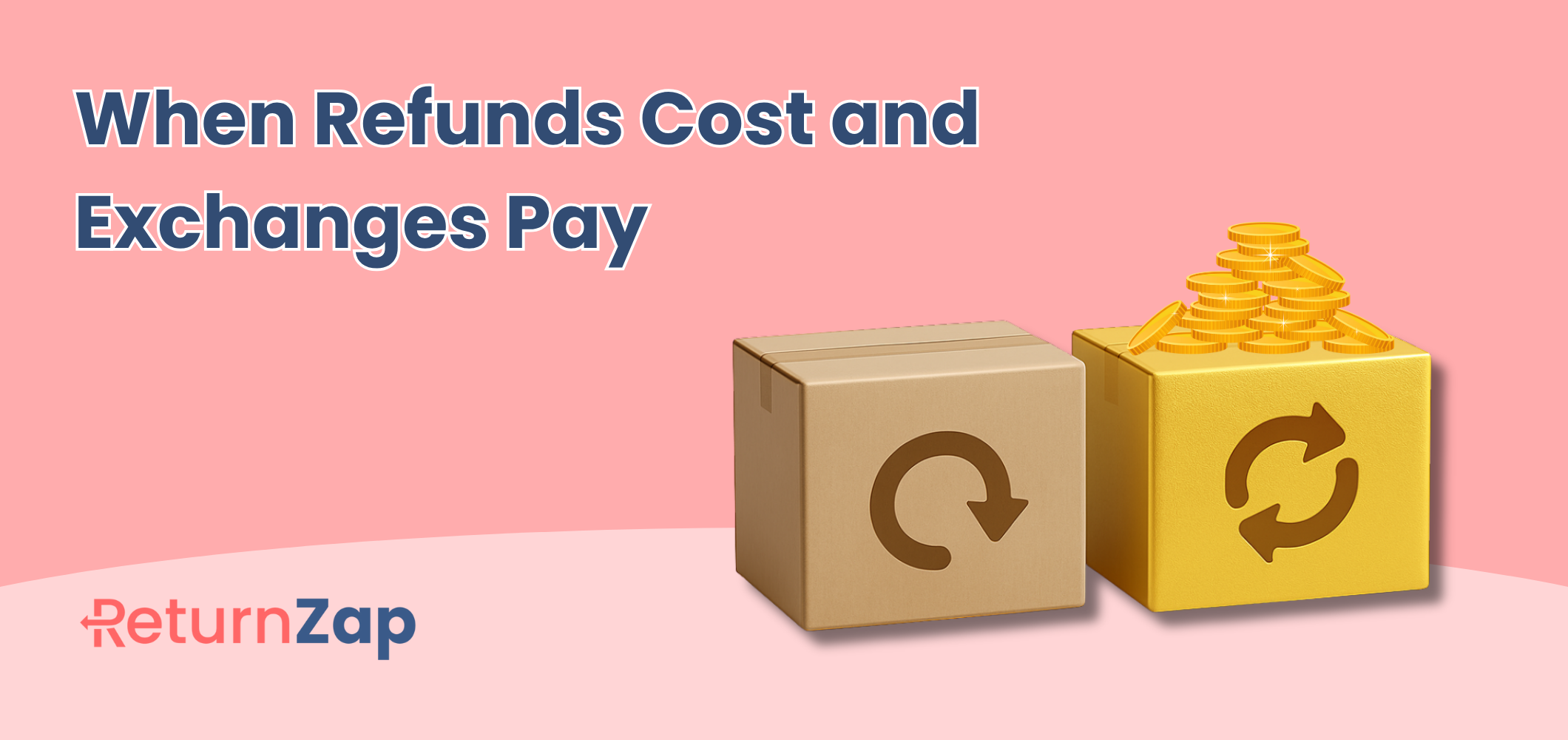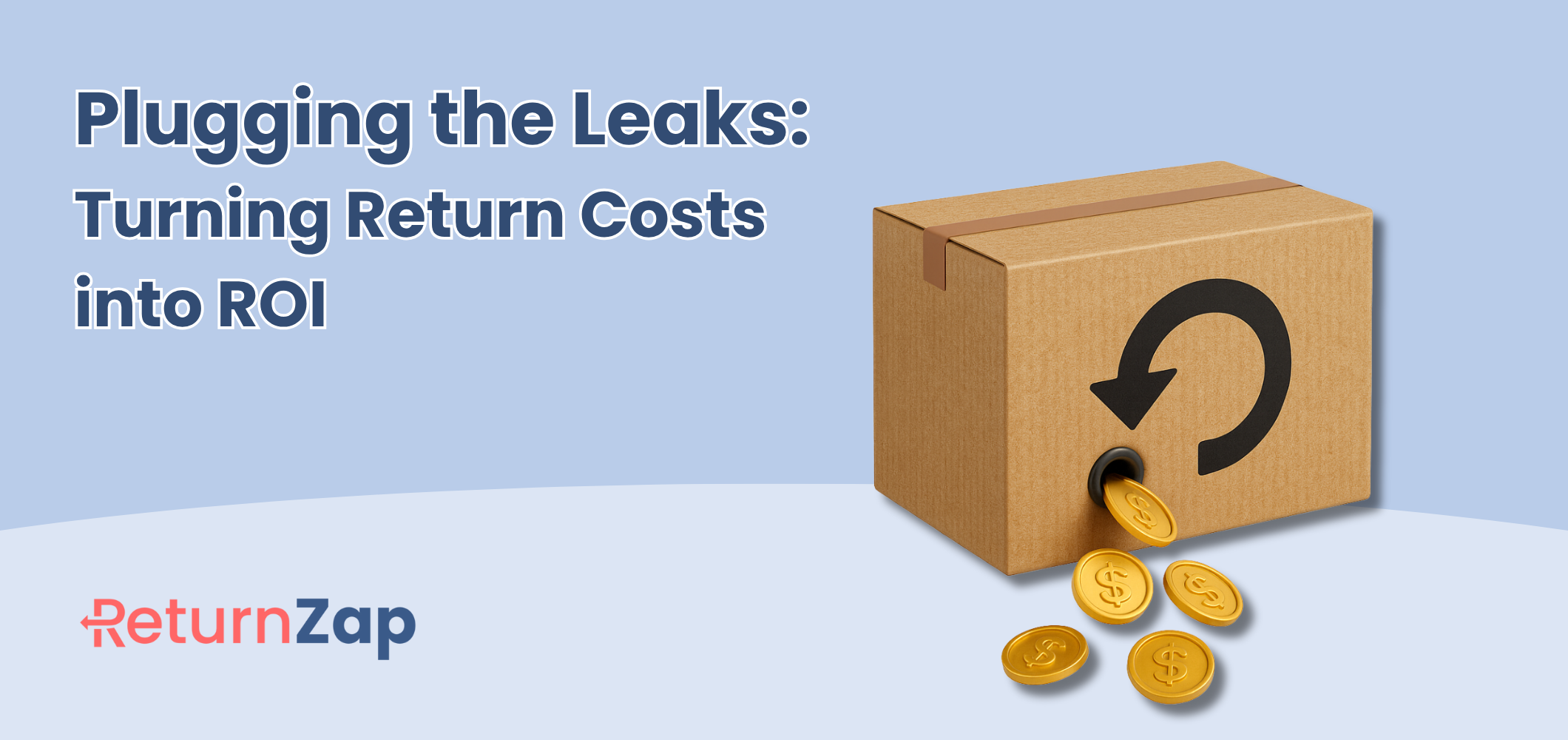Returnless Refund: Boosting Customer Loyalty in Retail

As a business, customer returns can be a big pain point. Not only do you lose out on a sale, but you also have the added expenses of processing the return, not to mention the impact on inventory and customer service resources and potential damage to customer relationships. This can be what leads you to explore the concept of returnless refunds, a newer practice some retailers are using to streamline their processes. These are also sometimes called "Green Returns".
Returnless refunds are when a company decides to offer a customer a refund without requiring the customer to return the item they ordered. Sounds counterintuitive, right? Interestingly enough, even retail giants like Amazon and Walmart have started using this model, particularly for lower-value items.
Throughout this article, we'll delve deeper into how returnless refunds work, their benefits, best practices when offering returnless refunds, and more. We'll also discuss whether this approach makes sense for your business and consider potential downsides to be aware of. That way, you can see whether this might be a viable solution for you.
Understanding How Returnless Refunds Work
If you're new to the concept of returnless refunds, the whole idea might seem a bit mind-boggling at first. How can someone get a refund without returning the actual product? The concept, in reality, is quite straightforward and is reshaping how businesses handle returns.
In a traditional setting, if a customer doesn't like, need, or want a product they've ordered, they have to go through the process of returning it. This might involve:
- Requesting a return authorization,
- Boxing up the item,
- Labeling it for return,
- Taking it to a shipping center
- Waiting for the return to be received and processed
All these steps happen before getting refunded. For businesses, this means they’ll have to take time to process the refund and pay for return shipping. Plus, if it’s physical merchandise, they’ll have to inspect the item for damage or use and then add the product back to their inventory (or dispose of it).
As a result, this process can be quite costly and time-consuming both for the business and the customer.
Returnless refunds, on the other hand, take a completely different approach from traditional ones. When a customer requests a return, they are refunded immediately, and there's no need for the customer to send the product back. The refund gets processed, and the customer gets to keep the product.
Sometimes, this can lead to not only reduced costs and time savings for the business but also increased customer loyalty.
Benefits of Returnless Refunds
As business owners, it's essential that you keep your customers happy while maintaining efficient operations and cost-effective practices. Implementing a returnless refund policy could be a game-changer in that respect.
Let’s go over a couple of the different benefits of returnless refunds.
Reduction in Logistics and Handling Costs
Traditional returns involve several steps like shipping, inspection, restocking, and sometimes even refurbishing. By offering returnless refunds, you eliminate these costs. Businesses may use returnless refunds for low-cost items to save on these expenses.
Enhanced Customer Experience
The return process tends to be one of the major pain points for customers. It's often time-consuming and requires effort, which can negatively impact their overall shopping experience. By providing returnless refunds, you can remove this hassle.
Increases in Customer Loyalty and Retention
Happy customers result in loyal customers. If you offer a seamless and satisfying return experience, customers are likely to come back to you for their future purchases.
Competitive Advantage
Not every business is offering returnless refunds right now. As a result, implementing this can set you apart from the competition. Smaller businesses, such as boutique stores on Etsy, use returnless refunds as a unique selling proposition to gain market share.
Environmental Considerations
Return processes, especially for global distances, can have a considerable environmental impact. By avoiding these processes, you're doing your bit to reduce unnecessary transportation and, in turn, your carbon footprint.
Best Practices in Implementing Returnless Refunds
Although returnless refunds can offer quite a few benefits to businesses, there are still some best practices to follow to ensure you take advantage of said benefits.
A few best practices include:
- Implementing returnless refunds selectively: While the returnless refund model could greatly benefit your business, it's important to remember that it might not be the best approach for every situation.
- Prioritizing customer history: Taking into account a customer's return history can be an effective way to minimize abuse of this policy. If a customer frequently purchases and then asks for a refund, it might indicate a pattern of fraudulent behavior.
- Set up clear terms and conditions: Ensure that your returnless refund policy is clearly outlined on your website. Include detailed information on the types of products eligible for returnless refunds, the options for customer reimbursement, and any potential exceptions to the rule.
With these best practices, you can ensure that your returns policy isn’t being taken advantage of and that you’re getting the most out of this style of returns.
Deciding Whether Your Business Should Offer Returnless Refunds
As a business owner or manager, one of the most crucial decisions you'll need to make is whether or not to offer returnless refunds. This decision isn't to be taken lightly, as you need to carefully weigh the potential benefits and challenges that such a policy might have on your business.
In general, there are three key factors that can help you determine whether returnless refunds are right for you or not:
- The types of products you sell
- The nature of your customer base
- Your historical return data
Let’s cover each of these factors in greater detail.
Type of Products Sold
If your business specializes in selling relatively low-cost or consumable items, a returnless refund policy might make a lot of sense. That's because the cost of processing and shipping returns could potentially be higher than the value of the products themselves.
On the other hand, if your Shopify store sells high-value luxury goods, a returnless refund could significantly eat into your margins.
Nature of Your Customer Base
Another thing to consider is what your customer base is like. Do they have a high propensity to return items? Do they frequently purchase items, use them once, and then initiate a return? If so, a returnless refund might not be the best fit for your business model.
In contrast, if your customer base is made up of repeat customers who rarely return items, implementing a returnless refund could be an excellent tool for enhancing customer satisfaction and loyalty.
Business’s Historical Return Data
Looking at your company’s historical return data is also key to determining whether this policy will work for you or not. Examine your store's return rate and find out the most common reasons behind the returns. If the majority of returns are due to fit issues or customer preferences, a returnless refund could potentially be a great option.
But, if items are primarily returned because they're defective or not as described, it might be better to review your quality control or product descriptions first before implementing such a policy.
Identifying Products Suitable for Returnless Refunds
One of the key considerations for whether or not returnless refunds make sense for your business is the type of product you sell. Not all products make sense for returnless refunds.
Let’s take a look at a few different ways to identify if your products could work for returnless refunds.
Product’s Size, Weight, and Complexity
Larger, heavier, or more complicated items often incur a higher cost when returned due to the shipping and handling required. In these cases, a returnless refund can be beneficial to cut down on logistical expenses.
Think of furniture, high-end electronics, or heavy exercise equipment - the cost to send such items two ways can surpass the product’s actual price, which would make a returnless refund a strategic choice.
Product’s Nature and Quality
Perishable goods such as flowers, food, or makeup often can't be resold once opened or used, making them a strong contender for a returnless refund policy. For instance, beauty companies might find it more effective to offer returnless refunds on cosmetics because once these items are opened, they can no longer be sold due to hygiene and safety reasons.
Product’s Price
For lower-cost items, the cost of handling a return might equal or even exceed the product's retail price. In this case, offering a returnless refund makes sound business sense, as the administrative and logistical cost savings could outweigh the cost of the product.
Office supplies companies, for example, may decide it's more profitable to process a returnless refund on a pack of pens rather than pay for return shipping and restocking.
Considerations When Choosing to Offer Returnless Refunds
Choosing to implement returnless refunds is not a decision to be made lightly. As a retailer, here are some key considerations when thinking about instituting such a policy for your own business.
For starters, you need to make sure that you understand the potential for fraud. Some unscrupulous customers might attempt to take advantage of the system, claiming a refund without returning the product, even if there's nothing wrong with it. If not controlled, this can lead to significant financial losses.
Additionally, it’s important to conduct a cost-benefit analysis. Consider the typical costs of return processing for your business including shipping, handling, inspecting, restocking, and potential discarding of returned goods. These costs can add up, especially if you sell low-cost, high-volume goods.
Finally, make sure to evaluate the potential impact on your customer relationships. The choice to institute a returnless refund policy speaks volumes about your brand values and can directly enhance your customers' shopping experience and inspire brand loyalty. However, you also need to manage this carefully to ensure that it doesn't lead to misunderstandings or misuse.
How to Go About Setting up a Returnless Refund System
If you've decided that a returnless refund policy could work well for your business, the next step is setting it up effectively. It's crucial to remember that the process should be simple and clear, both for your team and for your customers.
Here are the steps to take to set up a returnless refund system.
Step 1: Determine Which Products Qualify
Before you can offer returnless refunds, you'll need to decide which products qualify. You want to find a balance between the costs you will incur vs. the benefits you'll gain.
For example, if you sell a mix of high-cost and low-cost items, it might make more sense to offer returnless refunds only for the lower-cost items where return shipping and restocking costs would outweigh the benefits.
Step 2: Update Your Return Policy
Once you know which products qualify for a returnless refund, you’ll need to update your return policy accordingly. Clear communication is essential here. Make sure the conditions under which customers can avail of returnless refunds are stated precisely.
Step 3: Inform Your Team
Your customer service team should be well-informed about the new policy. They need to understand which products are eligible, under what conditions the policy applies, and how to process a returnless refund.
Step 4: Implement Changes in Your Shopify Store
On Shopify, you can manage refunds within the order management section of your account. If a customer requests a return for an eligible product, you can process a refund directly through this section. However, for a more streamlined process, consider integrating a third-party app.
How to Prevent Fraud and Avoid Scammers
In the world of retail, online or offline, dealing with fraud is an unsettling reality. Nothing dampens a thriving business spirit like the suspicion or discovery of fraud. Understandably, implementing a returnless refund policy can potentially open your business to abuse and fraud.
However, there are several strategic measures you can put in place to safeguard your business:
- Implement customer tracking systems: This system should track details such as how often a customer shops with you, what they buy, and their return history.
- Place limits on returnless refunds: Decide how often a customer can take advantage of the returnless refund feature. This could be based on a specific time frame, like once a month, or based on the total value of refunds a customer can request in a given period.
- Lay out clear and detailed terms and conditions: Make sure your customers know the boundaries. Let them understand that culprits of fraudulent behavior will not be tolerated and will face stern actions like account deactivation.
In conclusion, while a returnless refund policy can greatly enhance customer satisfaction and loyalty, it's crucial to balance customer convenience with necessary precautions to protect your business from potential abuse. The key lies in finding that perfect balance.
Implementing Returnless Refunds with ReturnZap
If you’re ready to get started offering returnless refunds, a Shopify App such as ReturnZap can help. With ReturnZap, there are two ways to offer returnless refunds. These can be done on a manual basis, where each return request is reviewed and then approved for returnless refund, or on an automated basis through the use of advanced rules. When automated, shop admins can define a set of criteria when customers will automatically receive a returnless refund.
These settings can be controlled within ReturnZap settings, using the option for "Green Returns":

Let's take a closer look at each approach.
Manual returnless refunds with ReturnZap
When ReturnZap is configured to require approval for all return requests, shop admins will need to review and approve each request. When approving each return, ReturnZap will present you with a checkbox that allows the customer to bypass return shipping.

Once the return is approved, you will be able to process it as normal and issue the refund directly through ReturnZap
Automated returnless refunds with ReturnZap
If you have ReturnZap configured to automatically approve return requests as they come in, then you can configure ReturnZap rules to define conditions when customers will receive a returnless refund.
For example, you can set rules that bypass return shipping if the return reason is damaged or defective, or if the return value is below a certain threshold, or if the weight of the item is above a certain point.
From that point on, whenever a return is created that matches your conditions, the customer will receive a returnless refund. You'll be able to issue the refund directly through the app backend and delight your customer.

Learn more about ReturnZap
Want to lean more? Check out ReturnZap today to get a feel for how it can make processing returnless refunds seamless for your store.
Start Your Free ReturnZap Trial Today
Join hundreds of other Shopify merchants successfully managing their returns with ReturnZap




